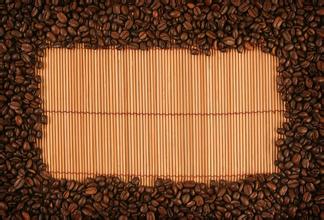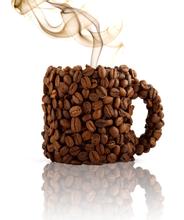Introduction to the flavor and taste characteristics of Arabica coffee manor in Indonesia
West Africa is the origin of Liberian coffee. It has strong adaptability to various environments such as high temperature or low temperature, humidity or dryness. It is not resistant to leaf rust and its flavor is worse than Arabica. Therefore, it is only traded domestically in some West African countries (Libya, Cote d'Ivoire, etc.) or planted for research.
About 65% of coffee circulating in the world market is Arabica
According to the International Coffee Organization (ICO), excluding domestic transactions in coffee-producing countries, about 65% of coffee circulating in the world market is Arabica and 35% is Robusta. Arabica beans are characterized by thin, flat particles, while Robusta beans are round and easily distinguishable by shape.
But if you add Arabica/Robusta hybrids-Variedad Colombia, for example, which is the dominant Colombian coffee variety and has a quarter of the Robusta lineage and is therefore resistant to leaf rust and high in yield-and its mutant subspecies, the classification becomes more complex. Some Arabica coffee beans are quite close to the native species, and some Arabica beans are quite similar to the robusta species. Even if coffee is given the same name (from where it comes from), the flavor varies depending on the cultivar. Leaf rust tolerance varieties found in congo, africa, teach arabica species to be more resistant. People like to compare Robusta to Arabica coffee, but Robusta is actually a mutant of Congo (Coffea canephora), so it's Congo that should be compared to Arabica. To this day, however, the name Robusta has become common practice, and it is regarded as the same species as Congo species.
Arabica coffee beans grow at higher elevations in the tropics, where it is cooler and where it is not suitable to grow. Robusta has a distinctive aroma (an off-flavor called "rob flavor," which some people think is a musty odor) and bitterness, which makes up only 2 -3% of the blend coffee and makes the entire cup of coffee Robusta. The flavor is so strong that you might want to consider tasting it directly. It is commonly used in instant coffee (which extracts about twice as much coffee as Arabica), canned coffee, liquid coffee and other industrially produced coffee. Caffeine content is around 3.2%, much higher than Arabica's 1.5%.
The main producing countries of Robusta species are Indonesia, Vietnam and West African countries centered on Cote d'Ivoire, Algeria and Angola

Important Notice :
前街咖啡 FrontStreet Coffee has moved to new addredd:
FrontStreet Coffee Address: 315,Donghua East Road,GuangZhou
Tel:020 38364473
- Prev

Introduction of Coffee Manor in Kahayang Ganzhuang, Bali, Indonesia
Westerners discovered the island, and in 1585, a Portuguese ship ran aground off the coast of Bukit, drowning most of its crew and leaving only a few survivors. The survivors were well entertained. Then three more Dutch navigators landed in Bali to explore. When they went back, there was only one person, and the other two were attracted by the beautiful customs of the island and stayed. However, this
- Next

The Lindong Coffee Manor in Sumatra, Indonesia, which has a good taste and flavor, introduces Rasuna Wahana.
Gold Mantenin, the Japanese adopted more stringent quality control more than a decade ago. After picking beans manually for four times, they eliminated defective beans and produced gold mantenin with dark green color and equal appearance of beans, creating another wave of market demand. Even Europe and the United States are crazy about it. The aged Agedmandheling is as sweet as honey. The successful old bean has worn away Manning's inelegant sour taste. Sour
Related
- Does Rose Summer choose Blue, Green or Red? Detailed explanation of Rose Summer Coffee plots and Classification in Panamanian Jade Manor
- What is the difference between the origin, producing area, processing plant, cooperative and manor of coffee beans?
- How fine does the espresso powder fit? how to grind the espresso?
- Sca coffee roasting degree color card coffee roasting degree 8 roasting color values what do you mean?
- The practice of lattes: how to make lattes at home
- Introduction to Indonesian Fine Coffee beans-- Java Coffee producing area of Indonesian Arabica Coffee
- How much will the flavor of light and medium roasted rose summer be expressed? What baking level is rose summer suitable for?
- Introduction to the characteristics of washing, sun-drying or wet-planing coffee commonly used in Mantenin, Indonesia
- Price characteristics of Arabica Coffee Bean Starbucks introduction to Manning Coffee Bean Taste producing area Variety Manor
- What is the authentic Yega flavor? What are the flavor characteristics of the really excellent Yejasuffi coffee beans?

